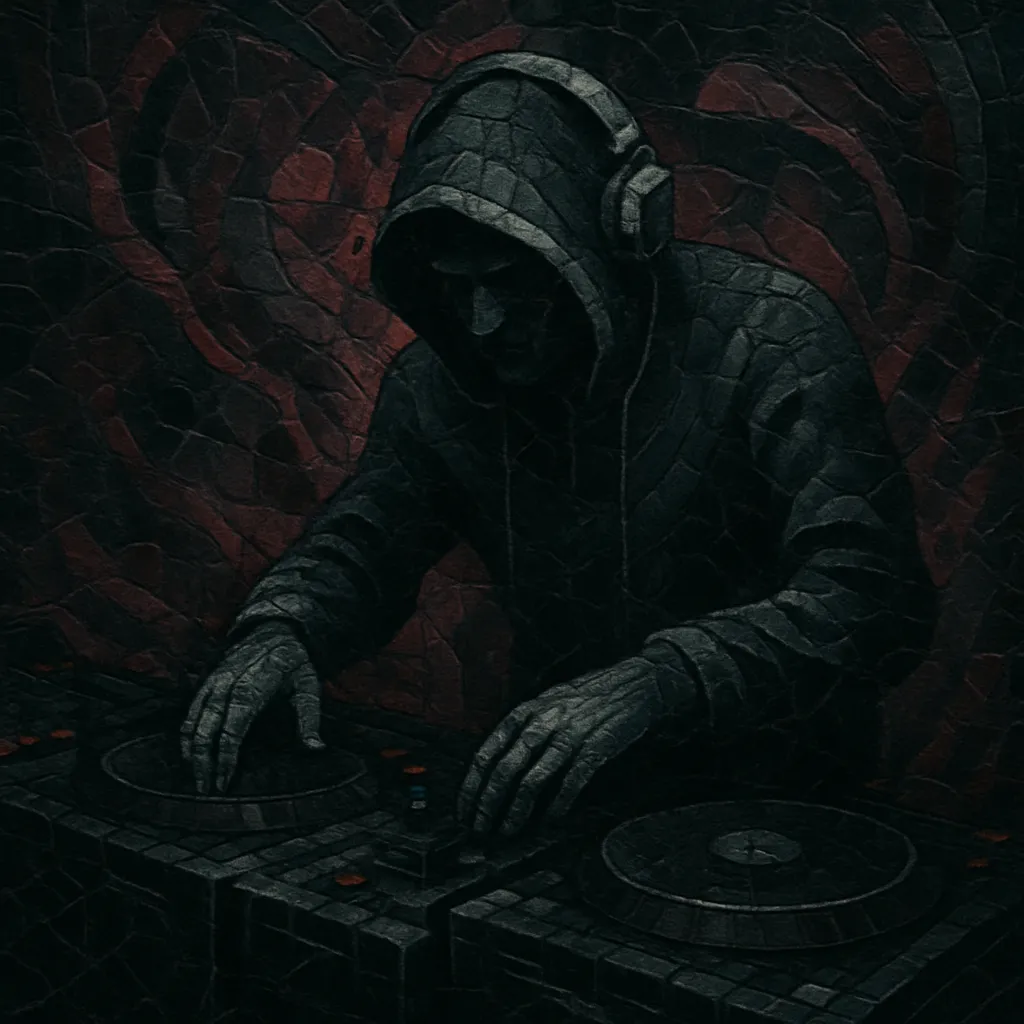Darkcore EDM is a bass-heavy, horror-tinged strand of electronic dance music that emphasizes ominous atmospheres, dissonant harmonies, and aggressive sound design. It draws from dubstep, industrial, and dark electro, using cinematic horror tropes, metallic textures, and heavily distorted basslines to create a foreboding mood.
Not to be confused with early-1990s UK “darkcore” in breakbeat hardcore, Darkcore EDM is a 2010s internet-native movement within the broader EDM and bass music ecosystem. Tempos typically sit around 140–150 BPM for dubstep-oriented material, 100–110 BPM for midtempo variations, and 125–130 BPM for dark electro/house crossovers. The result is club-ready music that feels claustrophobic, menacing, and theatrical.
Darkcore EDM emerged during the bass music boom that followed the mainstreaming of EDM in the early 2010s. Producers steeped in dubstep and brostep began emphasizing gloomier atmospheres, horror-film sound design, and industrial drum palettes. While it inherits the name “darkcore” from 1990s UK rave culture, this newer wave is rooted in modern EDM infrastructure—festival stages, online labels, and SoundCloud-centric communities—rather than breakbeat hardcore.
Between roughly 2014 and 2019, labels and event brands focused on heavy bass catalyzed a darker aesthetic. Never Say Die: Black Label, Disciple and its sub-imprints, and other bass-focused outlets popularized tracks with cinematic intros, punishing drops, and dystopian textures. Cross-pollination with industrial, dark electro, and neurofunk broadened the sound: reese-style basses and granular resampling met trap-style drums and dubstep half-time grooves. Online tutorials and preset-sharing made the sound design language (FM growls, comb-filter screeches, and brutal multiband processing) widely accessible.
In the 2020s, Darkcore EDM persists across bass sub-scenes—dubstep, hybrid trap, midtempo bass, and dark electro house—while coexisting with adjacent styles like tearout brostep. The aesthetic is now a recognizable palette: minor/Phrygian harmonies, horror SFX, mechanical impacts, and cinematic build-and-release structures. Although niche, the sound remains influential in festival bass sets and among producers seeking a moodier, more theatrical edge.
The 1992–1993 UK darkcore (breakbeat hardcore) is an historical antecedent in spirit—favoring darker atmospheres—but stylistically distinct (breakbeats, hardcore rave tropes). Darkcore EDM modernizes the mood within contemporary EDM frameworks, production tools, and club contexts.


